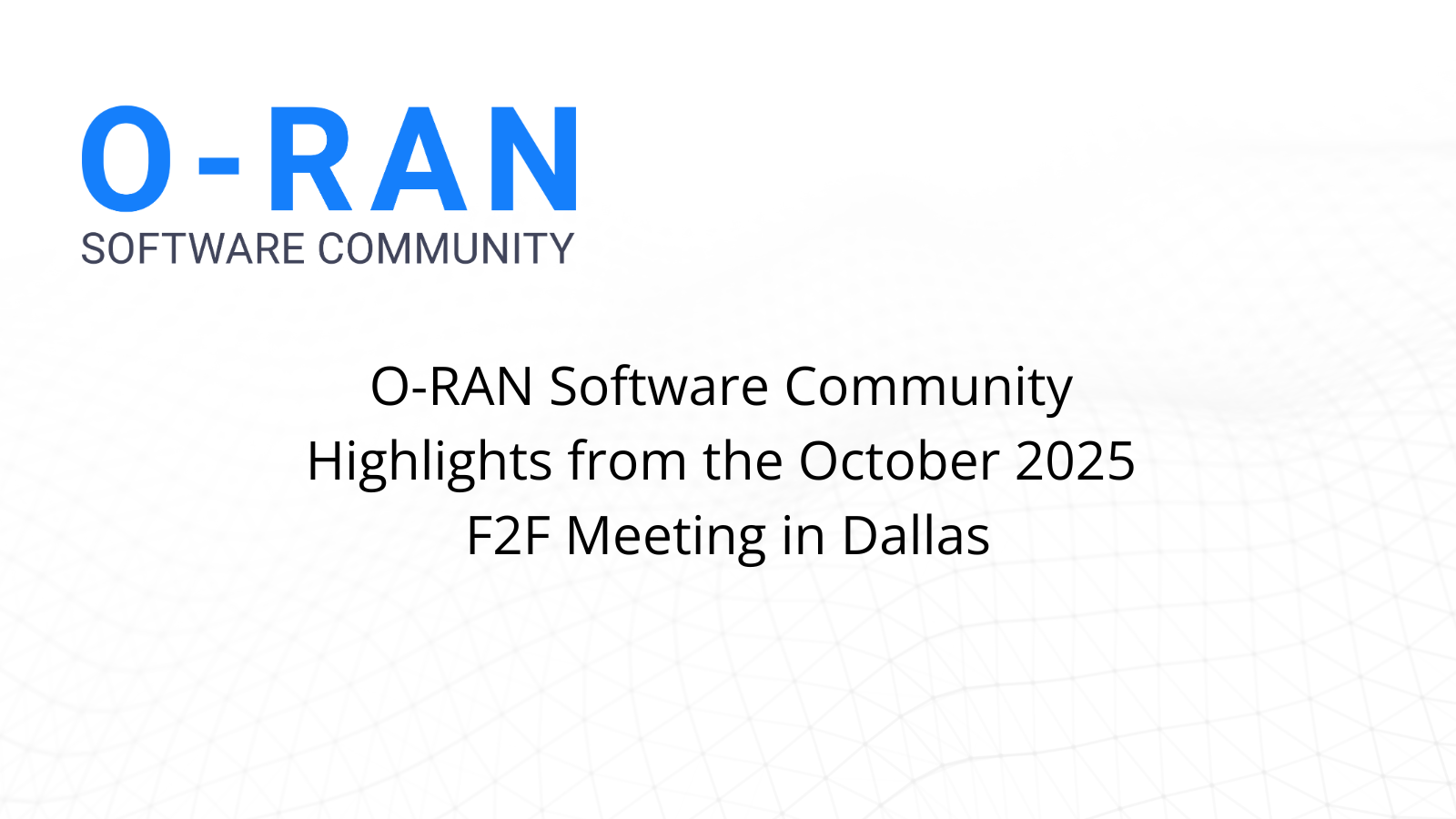


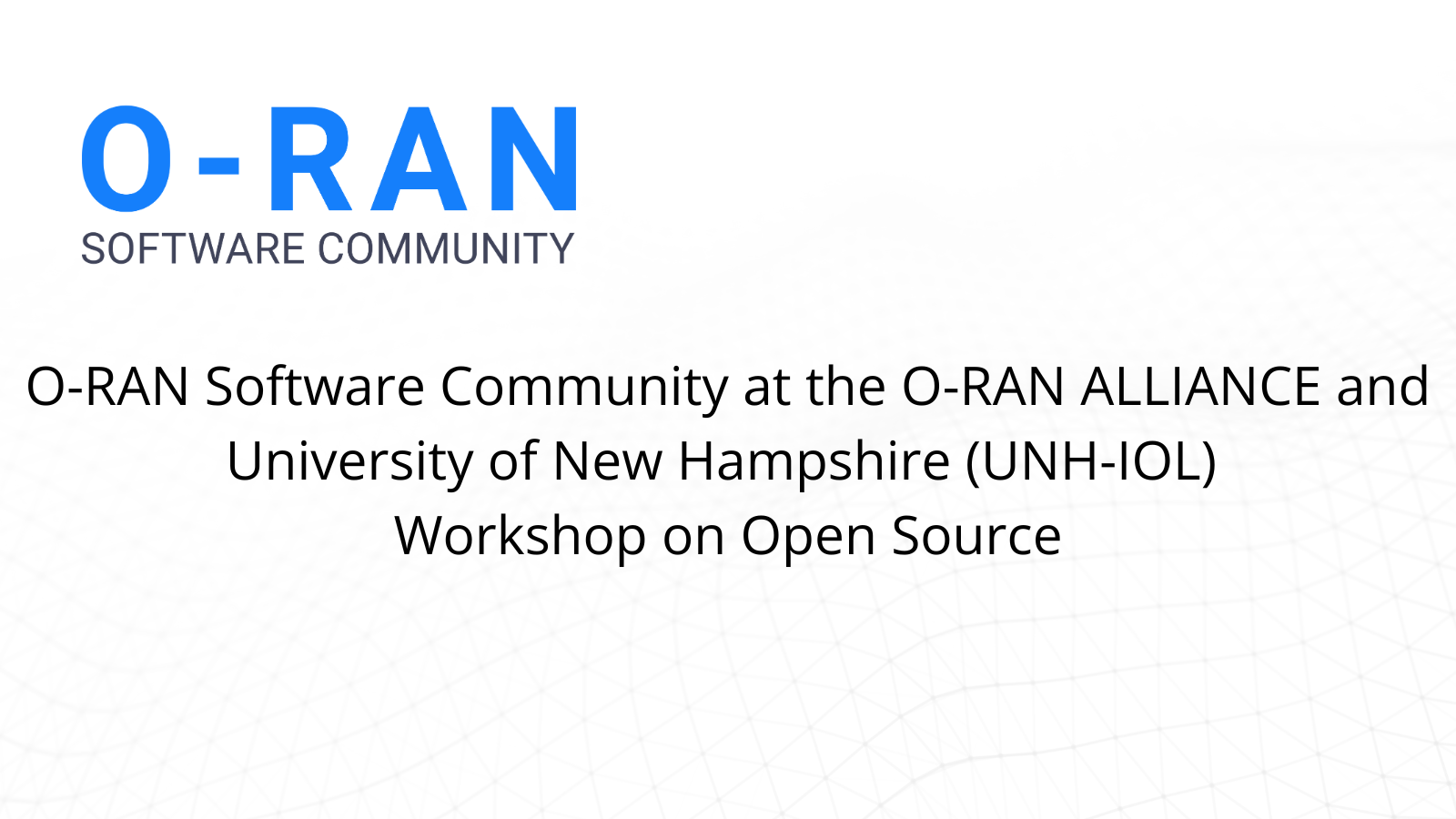
The O-RAN Software Community (SC) is pleased to share that we will be in attendance at the O-RAN ALLIANCE Open Source Focus Group (OSFG) / University of New Hampshire Interoperability Laboratory (UNH-IOL) Workshop on Open Source, taking place October 1–2, 2025 at the University of New Hampshire Interoperability Labs in Durham, NH, USA.
This workshop, co-sponsored by the O-RAN ALLIANCE OSFG and UNH-IOL, will bring together open source projects and community participants from across the end-to-end mobile network ecosystem. The discussions will span Radio Access Network (RAN), Core, Infrastructure, and Cloud, with a focus on promoting alignment, integration, and collaboration between projects.
Open source is central to the vision of O-RAN, helping to ensure openness, interoperability, and innovation across Radio Access Networks. The workshop will provide an opportunity to:
By participating, the O-RAN SC looks forward to contributing to these conversations and reinforcing the importance of collaboration between open source and standards efforts.
The O-RAN SC plays a critical role in delivering open source implementations that bring the O-RAN ALLIANCE’s architecture and specifications to life. Our community is advancing projects that are directly relevant to the workshop’s focus areas, including:
We look forward to sharing our progress and learning from other participants, with the goal of strengthening the entire open RAN ecosystem.
The two-day agenda includes:
Each track will provide a readout and recommendations back to the broader group, helping to shape next steps for integration and collaboration.
The workshop is open to all participants from the industry. O-RAN ALLIANCE membership is not required. Both in-person and virtual attendance options are available, and lunch will be provided for onsite participants.
📅 Date: October 1–2, 2025
📍 Location: UNH Interoperability Labs, 21 Madbury Rd., Durham, NH, USA
👉 Register here to secure your spot.
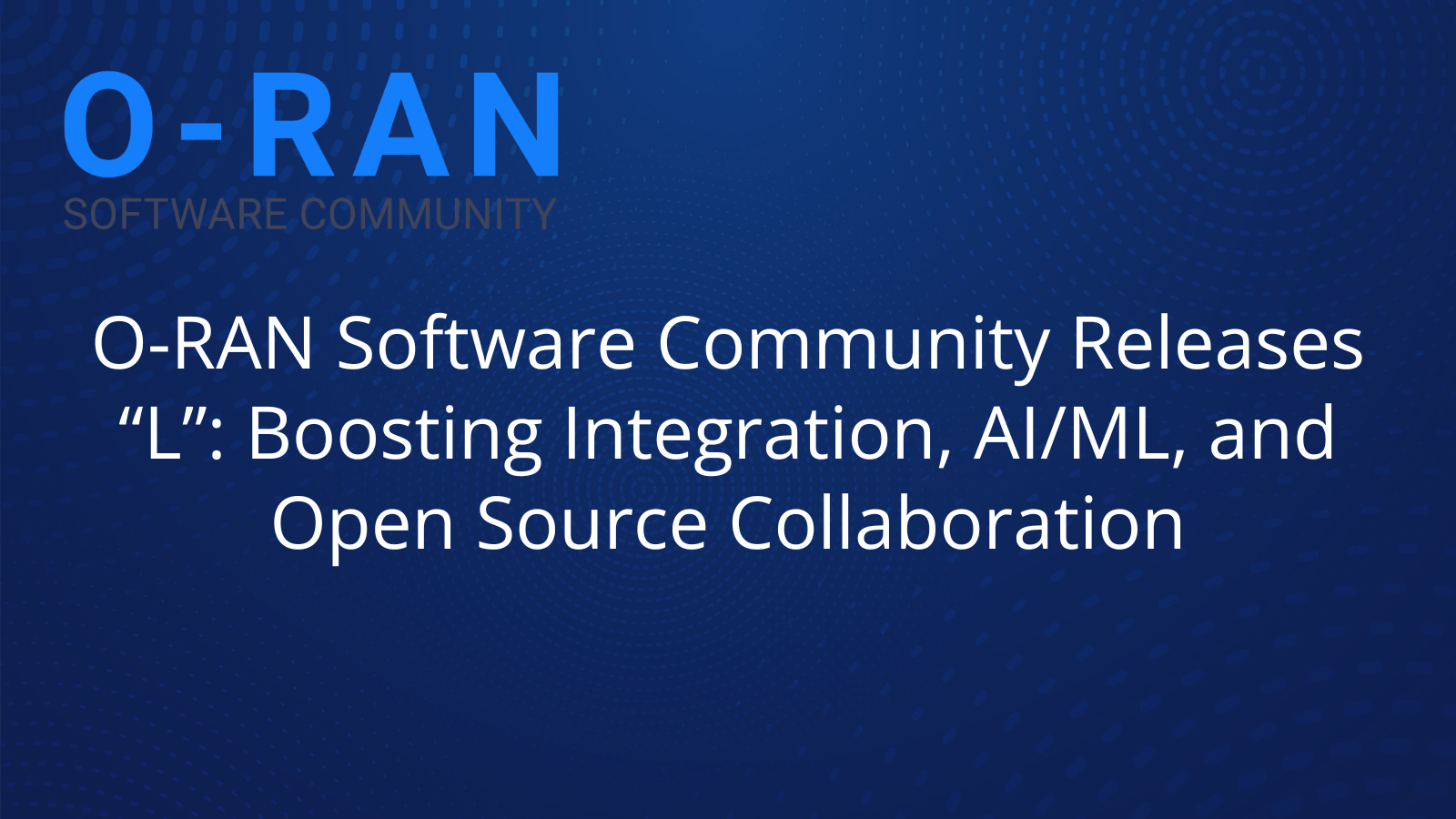
The O-RAN Software Community (O-RAN SC) is excited to announce the L Release, the latest update in our collaborative mission to deliver open, intelligent, and interoperable RAN software. Reflecting current and evolving alignment with O-RAN ALLIANCE specifications and developed through contributions from across the global open source ecosystem, this release introduces improvements in integration, automation, and AI/ML enablement across the stack.
Whether you’re a developer, network operator, academic researcher, or open source advocate, the L Release provides powerful building blocks to support testing, integration, and innovation across the Open RAN (O-RAN) ecosystem.
The L Release is a major milestone for the open RAN and open source communities. It highlights how cross-industry collaboration and transparent development practices can drive the evolution of modular, intelligent, and interoperable RAN technologies.
Key benefits of the L Release:
The L Release delivers updates across four key areas:
Whether you’re building next-generation mobile networks, developing new xApps or rApps, or researching AI in telecom, the O-RAN Software Community welcomes your involvement.
Stay tuned for what’s next in the M Release!

The Open Source Focus Group (OSFG) of the O-RAN ALLIANCE convened an ad-hoc meeting on May 23, 2025, hosted by Ericsson in Kista, Sweden. The goal: to identify key open source initiatives relevant to O-RAN, evaluate testing infrastructure needs, and begin planning a collaborative workshop for later this year. The event brought together participants from the O-RAN Software Community (SC), O-RAN Working and Focus Groups, and multiple member companies across the ecosystem.
The meeting began with a restatement of OSFG’s mission, led by Co-Chairs Irfan Ghauri (EURECOM/OpenAirInterface), James Li (China Mobile), and David Kinsey (AT&T), supported by Martin Skorupski (Highstreet Technologies). The group reaffirmed its commitment to openness, transparency, and non-confidential discussion per O-RAN ALLIANCE guidelines.
A series of technical presentations offered insight into open source workstreams intersecting with O-RAN priorities:
OSFG is actively working to align with other Linux Foundation and CNCF projects. Efforts include outreach and coordination with:
The group discussed possibly inviting representatives from these projects to the next OSFG workshop.
A brief update on the EU Cyber Resilience Act (CRA) was delivered by Jimmy Ahlberg (Ericsson). Key takeaways:
Sridhar Rao (Linux Foundation) led a discussion on O-RAN SC’s CVE process—covering scanning, dashboard reporting, and plans to bring on interns to address critical issues by the end of 2025. The group is also exploring whether CVE data should be published on [cve.org] and/or in blog posts.
A proposal was made to request funding for security interns via TOC (Technical Oversight Committee). The broader question of each project’s security stance (“want to fix,” “not interested,” etc.) remains open and will be addressed at the project level in O-RAN SC meetings.
The OSFG officially acknowledged the signed Memorandum of Understanding (MoU) between O-RAN ALLIANCE and the Linux Foundation Networking (LFN), which establishes a basis for inviting LFN participants into OSFG activities. The meeting explored ways to streamline the invitation process for recurring contributors.
The group concluded with action items to support an upcoming workshop tentatively targeted for September 2025. Nephio is already planning a face-to-face event, and a joint session with OSFG/O-RAN SC was proposed. The group aims to:
The OSFG ad-hoc meeting in Kista underscored the importance of open collaboration, strategic alignment, and technical integration between the O-RAN ecosystem and open source communities. With a renewed focus on testing infrastructure, security posture, and a shared workshop agenda, the group is poised to enhance the impact of open RAN across global deployments.For additional details or to get involved, please visit the O-RAN SC website.
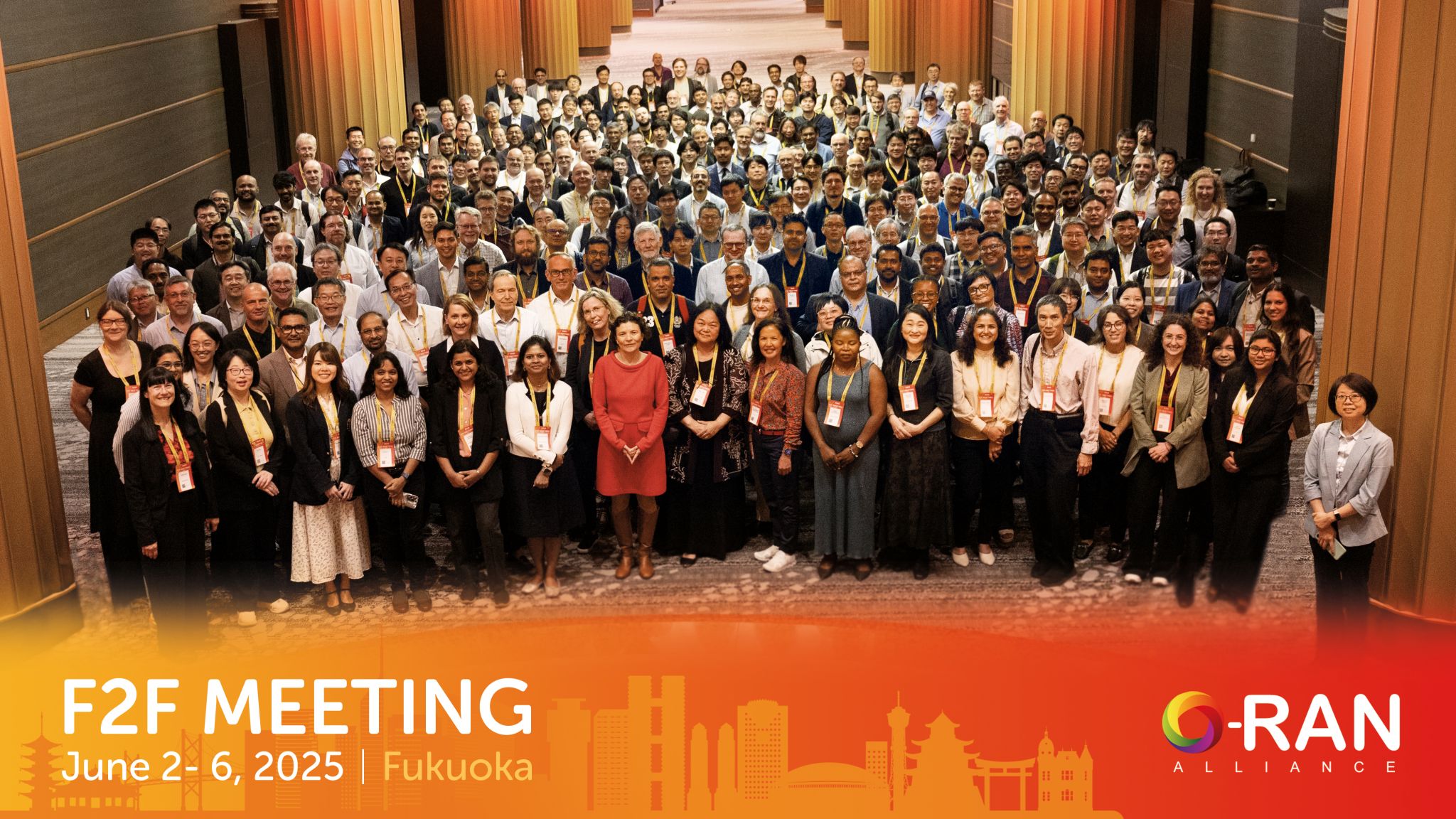
The O-RAN Software Community (SC) is proud to participate in the O-RAN ALLIANCE Face-to-Face (F2F) Meeting this week in Fukuoka, Japan—a vital gathering that brings together stakeholders from across the global Radio Access Network (RAN) ecosystem. This event is a cornerstone of collaboration, offering a unique opportunity for in-person discussions, planning, and alignment between industry experts from around the world.
With 320 experts from 94 companies and institutions joining in person—and many more connecting remotely—this meeting is a vibrant hub of innovation and progress. Participants span a wide range of sectors, including mobile network operators (MNOs), vendors, research institutions, academia, and government agencies, all working toward the common goal of defining and advancing open, intelligent, and disaggregated RAN.
Throughout the week, 11 parallel work streams run from morning to evening, filled with Work Group and Focus Group sessions. These intensive meetings allow the community to align on architecture, specifications, implementation plans, and interoperability—all essential for advancing the O-RAN vision. Despite time zones or travel fatigue, the energy is high, and the focus is clear: building the future of RAN together.
Face-to-face collaboration plays a critical role in accelerating standardization and resolving complex challenges. That’s why the O-RAN ALLIANCE organizes F2F meetings three times per year, rotating between Asia, Europe, and the Americas. These gatherings help deepen community bonds and strengthen cross-organizational efforts.
The O-RAN Software Community is grateful for the continued dedication of all its members and participants who contribute their time, expertise, and vision. Thank you for helping move the needle toward an open and interoperable RAN ecosystem.
Stay tuned for more updates from Fukuoka and follow our journey at o-ran-sc.org and on LinkedIn.
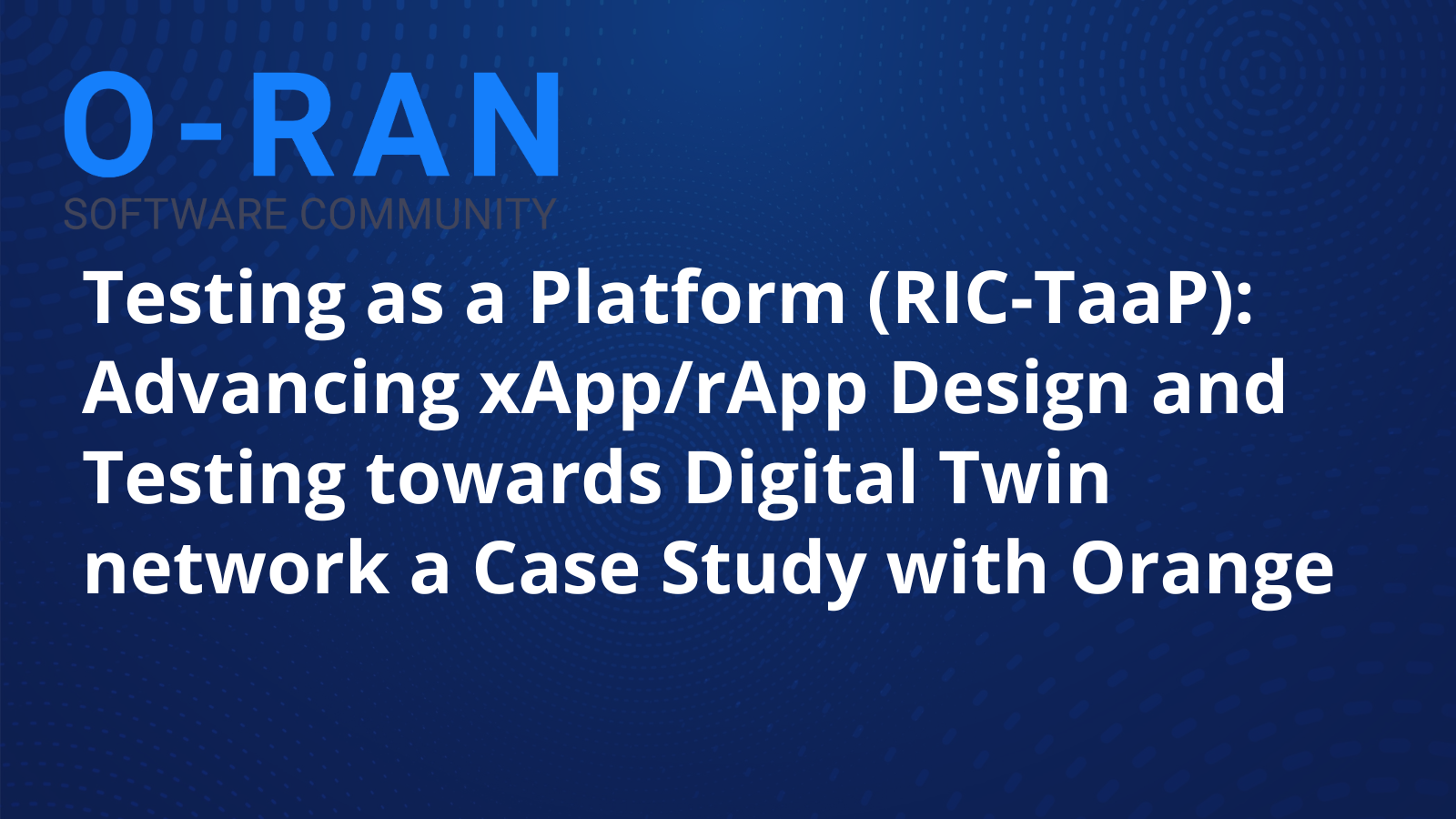
Author: Mina Yonan, Orange Innovation Egypt, mina.awadallah@orange.com
The adoption of the RAN Intelligent Controller (RIC) in networks encounters several challenges that may impede its objective and efficiency. To enable efficient and plug-and-play use cases, we can categorize these challenges into two key areas:
To address the aforementioned challenges, Orange has announced the development of RIC Testing as a Platform (RIC-TaaP)—an open source initiative designed to streamline xApp/rApp functional and operational testing, fostering innovation in xApp/rApp design and provide a proven digital-twin networks.
Recognizing the need for a robust, fully open source testing environment, Orange Innovation Egypt (OIE) has focused on enabling system-level use cases by leveraging advanced open source components. To achieve this, OIE has integrated FlexRIC from EURECOM with the ns-O-RAN simulator, originally developed by the Institute for the Wireless Internet of Things (WIoT) ,University of Padova and Mavenir. The team has enhanced the simulator to ensure full compliance with E2AP v1.01, KPM v3, and RC v1.03 standards, providing a sophisticated 5G simulation environment for validating complex use cases.
Additionally, Orange Innovation Poland (OIP) has augmented the platform with a user-friendly dashboard, RIC-TaaP Studio, enabling intuitive test scenario design and incorporating a range of operational features. Across its innovation centers, Orange continues to integrate leading open source solutions, including the 5G-LENA module, developed by the OpenSim Research Unit at the Centre Tecnològic de Telecomunicacions de Catalunya (CTTC).
Committed to openness and accessibility, Orange ensures that RIC-TaaP remains an open source and user-friendly platform, making Open RAN research and development more accessible to a broader community of engineers and researchers.
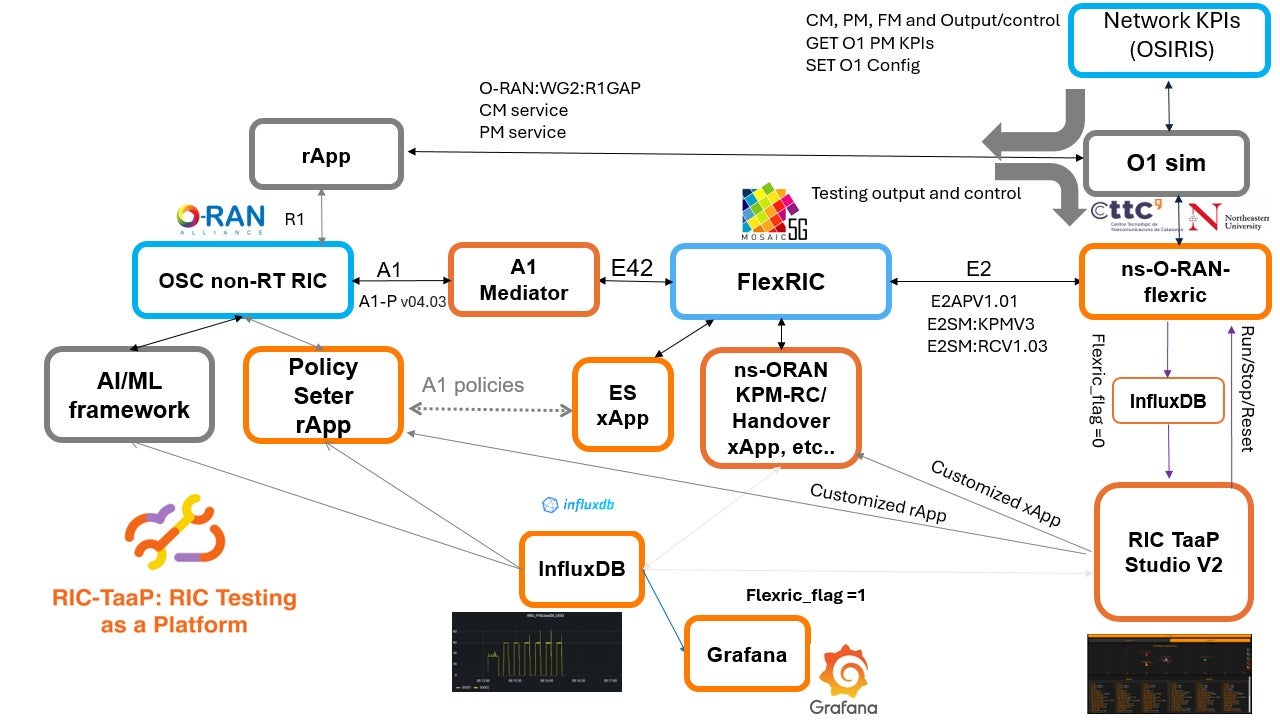
To establish a fully capable platform for xApp/rApp design and testing, RIC-TaaP comprises nine key components. These elements collectively form a flexible and robust network simulation environment, enabling efficient xApp/rApp development, validation, and deployment.
| E2APv1.01 | E2 SETUP REQUEST |
| E2 SETUP RESPONSE | |
| RIC SUBSCRIPTION REQUEST | |
| RIC SUBSCRIPTION RESPONSE | |
| RIC SUBSCRIPTION FAILURE | |
| RIC INDICATION | |
| RIC CONTROL REQUEST | |
| RIC CONTROL ACKNOWLEDGE | |
| RIC SUBSCRIPTION DELETE FAILURE | |
| RIC SUBSCRIPTION DELETE REQUEST | |
| RIC SUBSCRIPTION DELETE RESPONSE | |
| KPMv3 | List of KPIs supported by ns-O-RAN |
| RCv1.03 | – CONTROL Service Style 3 (Section 7.6) – Connected Mode Mobility Management (Section 7.6.4) – Control Action ID 1 (Handover Control) (Section 8.4.4.1) – Control Action ID 2 (Conditional Handover Control) (Section 8.4.4.2) – Control Action ID 3 (DAPS Handover Control) (Section 8.4.4.3) |
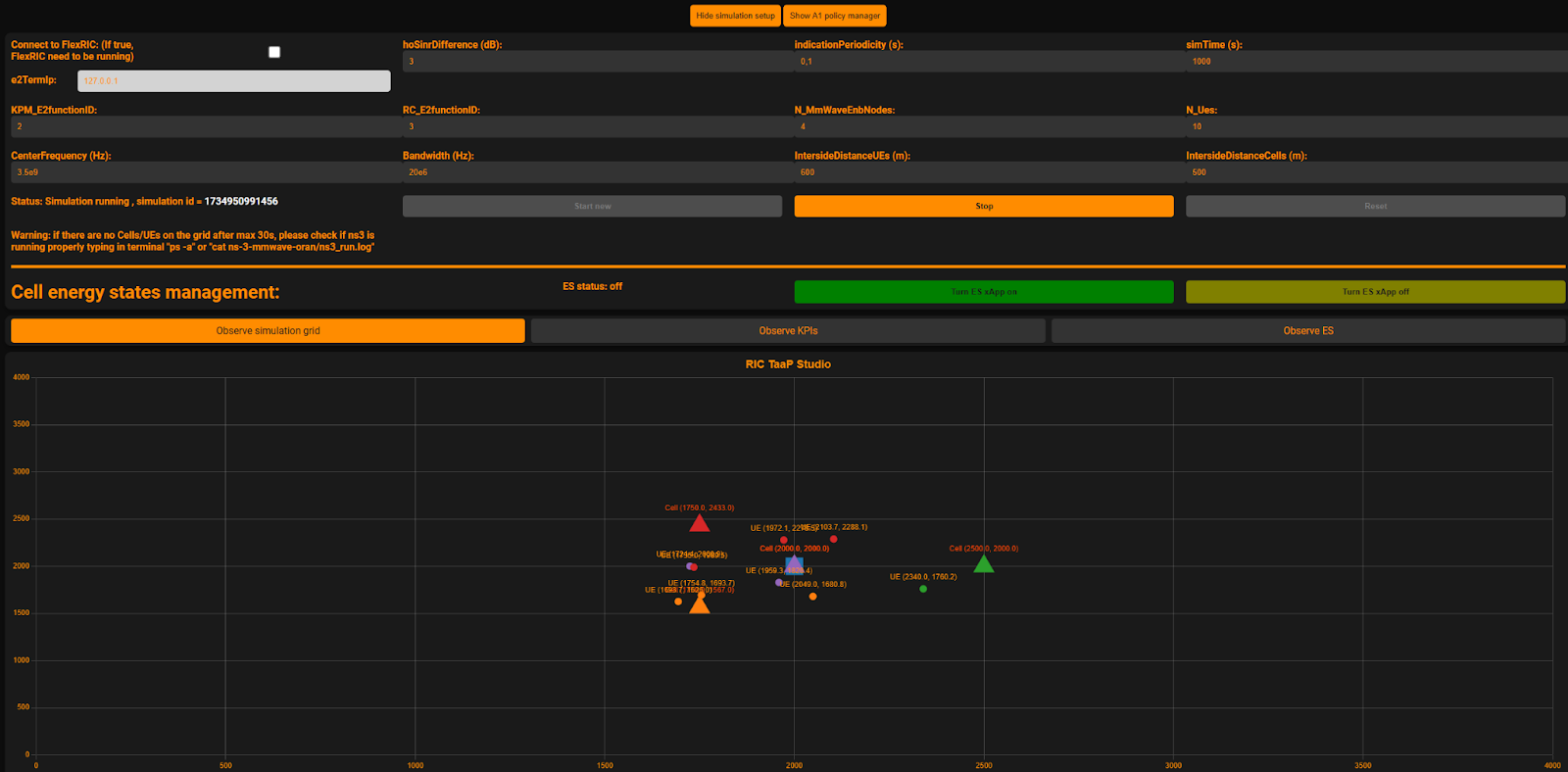
Use-case 21: Energy Saving under Cell Utilization “Cell on/off” as an example
The Energy Saving (ES) logic example in RIC-TaaP is driven by cell utilization, particularly Physical Resource Block (PRB) usage (%). The decision-making process follows a structured sequence, as illustrated in the diagram below:
The Energy Dashboard in RIC-TaaP Studio provides real-time monitoring of network performance and energy efficiency metrics. It includes three key categories:
Domain Leader: Eric Hardouin, Orange Innovation, eric.hardouin@orange.com
Program Leader: Fabrice Guillemin, Orange Innovation, fabrice.guillemin@orange.com
Project Leader: Alassane Samba,Orange Innovation, alassane.samba@orange.com